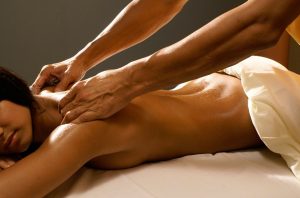Massage is one of the most popular methods for relieving muscle tension, improving blood circulation, and achieving an overall sense of relaxation. There are numerous different massage techniques, each with its own characteristics and benefits. Two of the most common and effective types of massage are myofascial massage and deep tissue massage. Both of these methods provide significant relief, but they differ in their approach, techniques, and goals.
Myofascial Massage: Definition and Features

Myofascial massage is a specialized massage technique aimed at relieving pain and discomfort in connective tissues. It is based on the concept of myofascial trigger points, which are areas of fascia where tightness accumulates. Key features include:
- Application of Pressure: The massage therapist uses hands, fingers, or specialized tools to apply pinpoint pressure to myofascial trigger points.
- Stretching and Relaxation: To improve mobility and relieve tension.
- Personalized Approach: It is customized to the specific needs and issues of each patient.
Deep Tissue Massage: Definition and Features

The primary goals of this type of massage are to release muscle tension and improve body mobility. Key features include:
- Deep Pressure: It allows for relaxation of tense areas.
- Targeted Approach: The massage therapist focuses on working with problematic areas.
- Improved Circulation: It promotes rapid recovery and reduces inflammation.
Comparison of Myofascial Massage and Deep Tissue Massage

Myofascial massage and deep tissue massage are two different approaches to treating muscle pain and tension. Here is a comparison of these two methods:
- Myofascial: Works on myofascial trigger points, focusing on resolving tightness and improving blood circulation in problem areas.
- Deep Tissue: Aims for overall relaxation, works on a larger area, and is applied to relieve pain and tension in various body regions.
Techniques and Pressure:
- Myofascial: Involves pinpoint pressure on myofascial trigger points.
- Deep Tissue: Includes stretching and the use of elbows and fists to apply pressure.
Pain Sensations:
- Myofascial: May be more painful, especially when working with myofascial trigger points that initially cause discomfort but lead to symptom relief.
- Deep Tissue: Can be quite intense, but pain sensations are more evenly distributed throughout the body.
How to Choose the Right Massage for You

Choosing the right massage depends on your individual needs, goals, and comfort. Here are some steps to help you select the appropriate massage:
- Define Your Goals: The first step is to determine what you want to achieve with the massage. It could be pain relief, relaxation, stress reduction, increased mobility, or something else. Your goals will guide you to the right type of massage.
- Consider Your Health Condition: If you have any medical conditions or limitations, it’s important to discuss them with the massage therapist. Some types of massage may not be recommended for certain conditions.
- Try Different Types of Massage: If you don’t have specific preferences, try different types of massage to find out what you enjoy the most. Different types offer different benefits.
- Listen to Your Body: During the massage, pay attention to how your body responds. If something feels lacking or uncomfortable, communicate with the massage therapist. This will help them tailor the massage to your needs.
Massage is not only an art of relaxation but also an effective means of improving physical and psychological well-being. Don’t hesitate to experiment and find the best massage option that suits your preferences on all levels!
Questions and Answers:
Are there any contraindications for myofascial and deep tissue massages?
Yes, some health conditions or illnesses may be contraindications. It’s important to discuss this with the massage therapist before the session.
Which areas of the body can be subjected to myofascial massage?
Myofascial massage can be applied to various parts of the body, including the neck, back, shoulders, and limbs.
Which areas of the body can be subjected to deep tissue massage?
Deep tissue massage can target deep muscle layers in different parts of the body, including the back, legs, and neck.
How often can myofascial massage be done?
The frequency depends on the client’s needs and the therapist’s recommendations, but typically sessions are not conducted more than once a week.












![11 Best Alternatives to Bedpage: Your Ultimate Guide [March 2024]](https://massage.dating/wp-content/uploads/2024/03/Best-Alternatives-to-Bedpage-300x200.jpg)






















































































































